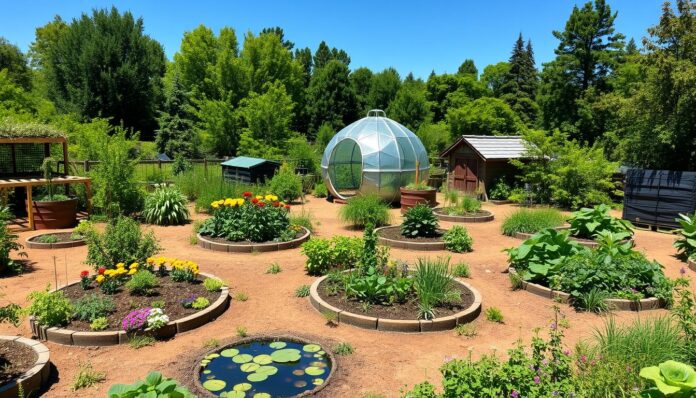Starting a sustainable garden is rewarding and good for the environment. Permaculture is a way to manage land and grow food that works with nature. It helps you create a garden that is productive and easy to care for, helping both you and the planet.
This guide will teach you the basics of starting a permaculture garden. You’ll learn about the key ethics and design principles of permaculture. You’ll also get practical tips on picking the right spot, making healthy soil, and choosing plants for a strong garden. Whether you’re new to gardening or have experience, this article will help you start your sustainable gardening journey.
Understanding Permaculture Principles and Design Basics
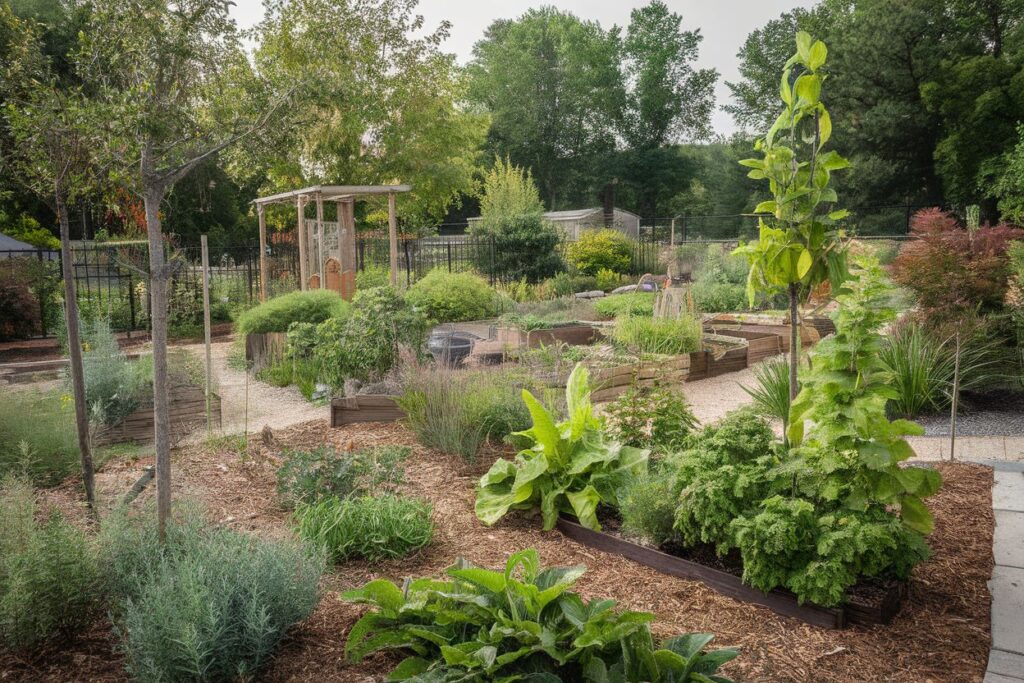
Permaculture is a way to garden and manage land that works with nature. It has three main ethics: Earth Care, People Care, and Fair Share. These ethics help gardeners make ecosystems that are healthy and meet their needs without harming the environment.
The permaculture design follows key principles like observing nature and using energy wisely. These principles help create gardens that are productive and strong. Zone planning is also key, organizing the garden by how often each area is used.
Zone planning divides the garden into areas based on how often they’re used. The most used areas are closest to the center. Sector analysis helps gardeners understand how sunlight, wind, and water affect the garden. This way, they can place elements for the best results.
“Permaculture is a design system for creating sustainable human environments. It is about designing ecological human habitats and food production systems. It is a philosophy and an approach to land use which weaves together microclimate, annual and perennial plants, animals, soils, water management, and human needs into intricately connected productive communities.”
– Bill Mollison, co-founder of the permaculture concept
Selecting the Perfect Location for Your Permaculture Garden
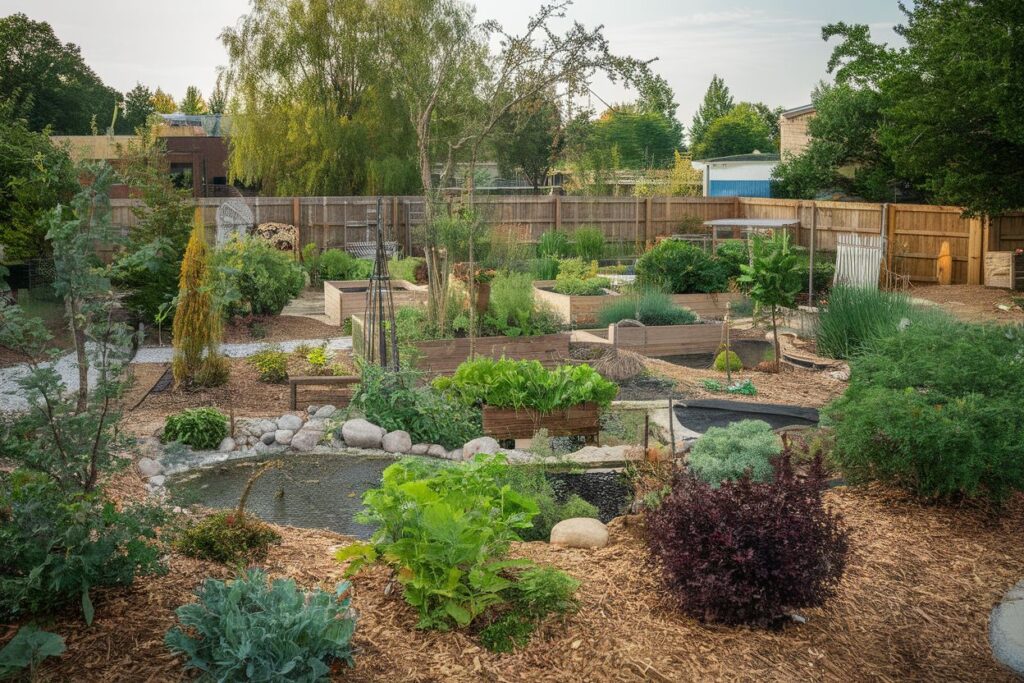
Choosing the right spot for your permaculture garden is key to its success. You need to look at sun exposure, water access, and microclimate. This helps create a place where plants can grow well.
First, check how much sunlight the area gets. Your garden needs at least 6 hours of direct sunlight each day. Also, think about the microclimate. This includes wind patterns, slope, and plants that can affect temperature, moisture, and soil.
Having a good water source is also important. Look for natural water flows, irrigation systems, or ways to collect rainwater. Don’t forget to test the soil quality to see if it’s right for your plants.
By picking the right location and understanding your site’s microclimate, you’re on the path to a thriving permaculture garden. The secret is to work with nature, not against it.
Essential Tools and Materials for Getting Started
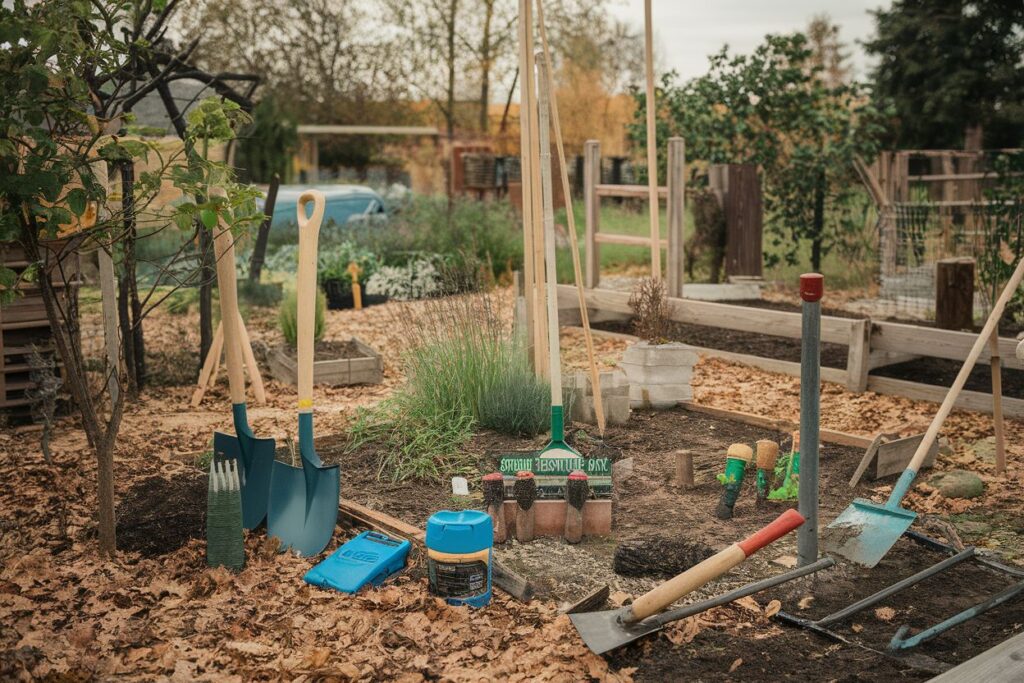
Starting a permaculture garden needs the right tools and materials. You’ll need gardening tools, sustainable construction supplies, and soil testing kits. Having the right equipment is key for a successful garden.
A good toolshed is vital for a productive garden. You’ll need sturdy hand trowels, pruning shears, garden forks, and long-handled shovels. Choose tools made from eco-friendly materials like stainless steel or recycled plastic.
For raised beds and trellises, use sustainable materials. Try reclaimed wood, bamboo, or repurposed shipping pallets. These eco-friendly materials are good for the environment and fit well with permaculture designs.
Healthy soil is crucial for your garden. Use soil testing kits to check pH and nutrient levels. Then, add organic amendments like compost or rock dust to improve soil quality.
With the right tools and materials, you’re ready to start a thriving permaculture garden. It will give you fresh produce and a closer bond with nature.
Building Healthy Soil and Creating Garden Beds
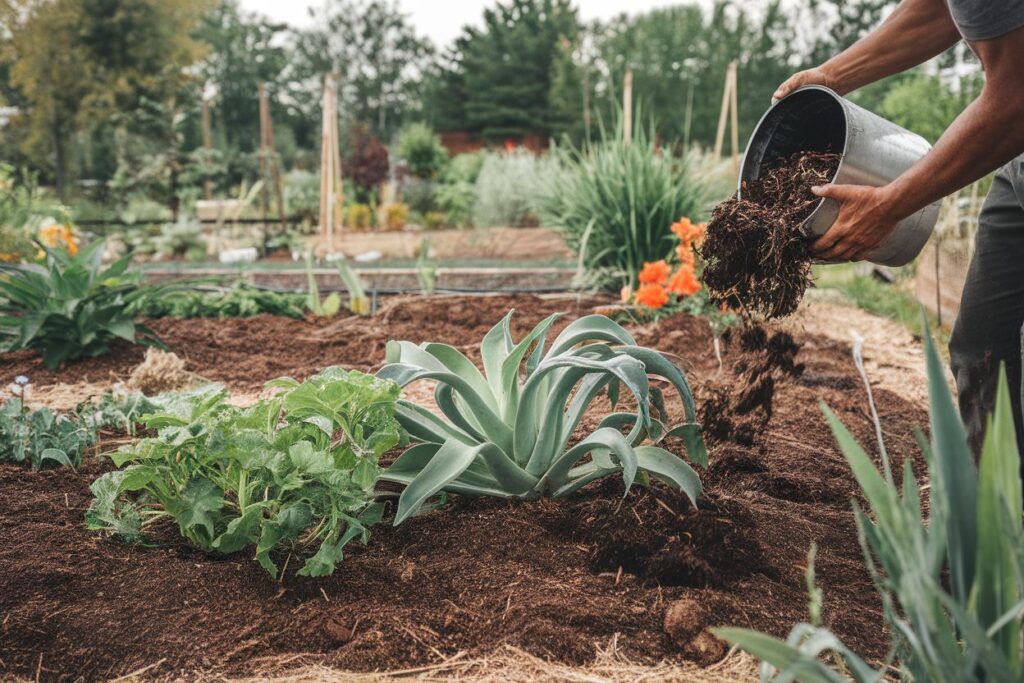
Starting a permaculture garden means making healthy, rich soil. Soil improvement techniques help create a home for diverse plants. Composting turns organic waste into a soil booster.
Composting adds vital nutrients to the soil. It also fights weeds and keeps the soil moist. Mulching helps the soil hold water better, cutting down on watering. No-dig gardening keeps the soil’s layers intact, supporting beneficial microbes and worms.
Following permaculture rules helps gardens grow strong and need little care. It’s about working with nature, letting the soil heal itself. With time and dedication to green practices, gardens become lush and balanced.
Choosing Plants for Your Permaculture Garden
Creating a thriving permaculture garden is more than picking a few plants. It’s about mixing different species that work well together. This mix supports each other through companion planting, food forest design, and using native plants.
Companion planting uses the special bonds between plants. By pairing them right, you boost nutrient cycling, pest control, and garden growth. Examples include tomatoes with basil, carrots with radishes, and beans with corn.
Permaculture focuses on food forests, which mimic natural woodlands. By adding edible perennials like berry bushes, nut trees, and veggies, you get a self-sustaining garden. This garden gives you food all year without much work.
Choose native plants for your garden. They fit your climate well and help local wildlife. Native plants are tough, need less care, and balance your garden’s ecosystem.
Final Thoughts
I wanted to show you the great benefits of permaculture in your garden. By using sustainable living methods, you can make a garden that feeds your family and helps the planet. It’s a way to live in harmony with nature.
Learning about permaculture design is key. It includes knowing the ethics, planning zones, and choosing plants. This lets you grow a garden that’s strong and works well with nature. It’s good for your land and helps you connect with nature.
Starting your permaculture journey is exciting. It’s not just about your garden. It’s about being part of a bigger effort for a better future. By living this way, you help the environment and improve life for everyone. See how your garden can change the world.


